This is the third instalment of the Sensei RNA fraud saga which continues to shake the National Center For Biological Sciences (NCBS) in Bangalore, India. This time, I interview a former lab member, the one fingered by NCBS and the principal investigator Arati Ramesh as the sole scapegoat, Siladitya Bandyopadhyay.
The student tells of a regime where Ramesh and her protegee Dolly Mehta generated bioinformatics predictions, and others were bullied, humiliated and threatened until they provided the experimental results which fit these in silico predictions. The only way to get there was research fraud, in which Sildatiya saw no other choice but to engage. Included in his interview are comments I received from another co-author of that paper, Susmitnarayan Chaudhury, whom his former trainee now openly accuses of research fraud.
This, again, was the retracted paper:
Siladitya Bandyopadhyay, Susmitnarayan Chaudhury, Dolly Mehta , Arati Ramesh Discovery of iron-sensing bacterial riboswitches Nature Chemical Biology (2020) doi: 10.1038/s41589-020-00665-7
It was about the alleged groundbreaking discovery of a new RNA which binds iron. This is my reporting how the fraud, which even included faked raw data, was exposed by PubPeer sleuths:
Soon after, Ramesh and NCBS issued statements attributing the sole blame to the student Siladitya, who was also accused of having disappeared overnight, having stolen all lab records, constructs and strains. Ramesh and others hinted their now retracted results would be actually proven solid and reproducible, if only they weren’t stolen. The official version started to crack when I published original emails by the student and by Ramesh herself, which exposed the toxic atmosphere in that lab, with a PI first bullying her students into research misconduct, later refusing to retract the paper until ordered to by the journal and the institutional investigation, and then scapegoating the student for all possible crimes.
Ramesh never replied to my emails. But I learned there is a new investigation taking place, by the NCBS parent body, the Tata Institute of Fundamental Research (TIFR). Its Academic Ethics Committee is investigating the circumstances of the retraction “as well as other papers and matters related to it“.
So below is my interview, to be precise two interviews. There are also the statements by Susmitnarayan (Susmit) Chaudhury who asserts his innocence while being charged by his former trainee Siladitya with habitual research misconduct. Susmit, who left NCBS for USA in 2019, claims instead to be both a victim of his colleague’s fraud, and completely exonerated in the NCBS investigative report, which he says confirmed all his research as absolutely correct and reproducible. He also wishes to republish the retracted paper, which Susmit explains was originally submitted containing his work, yet after peer review emerged with “~98%” of Siladitya’s utterly falsified data with another RNA construct. Susmit’s own results with a different RNA construct are allegedly pure, perfect and reproducible:
“both the data are solid, reproducible as per the investigation conducted by ncbs …you may ask them for proof in their letterhead [.] that was the prime reason why arati, me and dolly thought for republishing it with my data and dolly’s data…. [.] the internal investigation gave her confidence that the data I took is true“
He refused to share the NCBS report.
One day in the summer 2020, when Susmit already left NCBS, Siladitya emailed him a gel image, a real one from an experiment. Susmit’s email account replied with a fake, Photoshop-generated gel. Here it is:

Susmit explains:
“first of all these are not my gels, I never dealt with these. secondly very often Siladitya access my system to work. even my email id. we have shared common docs in g drive. i don’t know if he uses my email to work this. […] he had my credentials saved in his laptop“.
Right-ho. Susmit is apparently still working in academic research somewhere in USA, but Siladitya left academia and science in general, he works for a biotech company.
Now, the interview.

“On no condition can the prediction be wrong“
Interview with Siladitya Bandyopadhyay
My questions labelled LS, Sildaitya’s replies with SB.
LS: Can you confirm the authenticity of the emails quoted in my article, including the ones attributed to you?
SB: Yes, I am the author of the emails attributed to me.
LS: Dr Arati Ramesh writes in her personal statement that you “left my lab abruptly within a few days after the investigation (without turning in the correct constructs/strains related to this project and without sharing some of the ITC raw data).“. Is this what happened?
SB: I did not leave the lab abruptly, as stated in the personal statement. It is not possible to do so, more so when I am leaving after a proper investigation. I talked to all committee members on whatever occasions they asked for, and I admitted to all other manipulations in the lab to Jitu [Satyajit Mayor, NCBS director – LS]. I received a NOC [no objections certificate, -LS] post this meeting, and went ahead to join my job.
LS: Where are the raw data and constructs/strains now? Who has them?
SB: We had a lab desktop and a lab laptop where most of our data was stored, and everything else was sent to Arati. We submitted all data to Arati before she headed over to write the manuscript. The committee told me, and as per Jitu’s press statement, the committee has retrieved the raw data from the instrument itself. So the disappearance of the raw data is amusing to me.
The last day I visited the lab, I handed over all my constructs and strains to Arati and Deepa, and I received my NOC a month after that, on completion of all formalities. So, the constructs or strains should be atleast with Arati, if not anyone else in the lab.
LS: Can you describe Dr Ramesh’s lab leadership style? How were the students trained, how were experiments designed, controlled, reproduced and supervised? How did the bioinformatics to bench pipeline work?
SB: The amount of verbal abuse I have been faced with is beyond your imagination. I have just come after Masters, and had absolutely zero lab experience, so this amount of pressure was too much to handle for me. This left me or anyone else with no other option other than generating the desired data. This might be the same reason that Arati’s second paper has been flagged. This is the same reason, a current member of Arati lab called me one evening crying that she is facing tremendous pressure in the lab to replicate the experiments, and get the bioinformatics matching result. She has independently checked and she feels that a thing called iron riboswitch doesn’t even exist. It has gotten to the point where most students actually stopped meeting Arati out of fear because Arati harasses them for every little reason. And I will tell you why. She predicted stuff that we had to validate by experiments. Unlike other labs, we have to generate that data somehow, and on no condition can the prediction be wrong. Our experiments are always wrong.
LS: Feel free to name any examples.
SB: An ex-student from Arati’s lab reached out to me a few weeks ago, and told me what a horrible experience she had in her lab. She told her that she applied for a PhD position and needed a reference. Arati said she would give her one and asked her to share the link. A couple of days later, when she told her that she wouldn’t be able to work late and finish the gel in the same night because of personal reasons, she was told “you know I still have to fill out the recommendation form right? I can make sure nobody ever gives you a PhD position”. All because she said she wasn’t going to be working late that evening!! She further mentioned “As someone who was isolated from lab members and away from family, my time in her lab took a great toll on my mental health” and “I was motivated to work under a woman in science in a field I was passionate about. But my time in her lab led to nothing beyond derelict mental health and sapping of self-confidence.”. She never let anyone of the lab know about her place of work, because she is sure Arati is capable of trying to destroy her future. Quite a few people left the lab due to such immense pressure, and some even left in a week, and we never got to know why they left.
LS: Would you say there was bullying in the Ramesh lab, according to your experience? Did the NCBS authorities know, and if yes, how did they deal with it?
SB: Yes, if this behavior is called bullying, then yeah there was a lot of bullying. I have heard that NCBS authorities received multiple complaints against her, but I cannot confirm if they actually acted on it.
LS: Dr Ramesh and NCBS (in this statement) insist that all data manipulations were committed by you alone, without anyone else’s involvement or knowledge. Is this what happened? Why did you decide to manipulate data? Who knew of it? Who else engaged in this practice? Did Dr Ramesh or other lab members know of the goings-on?
SB: No, I did not commit the manipulations alone. The co-first author of the paper, Dr Susmitnarayan Chowdhury assisted me in manipulating the images.
In her postdoc publication (Furukawa et al Molecular Cell 2015), Arati reported that NiCo RNA does not bind iron. Therefore, this RNA was used as a negative control for the iron riboswitch. First time Susmit did this experiment, his NiCo RNA showed binding to iron. As soon as he informed Arati about this, Arati responded that the data was published and that he couldn’t replicate it. We then published Susmit’s data, which shows that NiCo RNA does not bind to iron. The data manipulation began here. Just a few months before our paper was published, a group published an article (Xu & Cotruvo Biochemistry 2020) in ACS publications which showed that the NiCo RNA binds iron.
LS: Already in your emails available to me, which I published without naming the accused party, you charged Dr Susmitnarayan Chaudhury with research misconduct. Can you elaborate on your accusations? Did you ever work with him, and if yes, what was your experience?
SB: I was required to reproduce data showing that Sensei RNA is intercalated with EtBr on my first day in the lab. This is the first day I came across someone manipulating a fluorescence instrument. I never knew it was even possible to do so, and this kind of manipulation is almost impossible to detect. This experiment has never worked in anyone else’s hands except Susmit’s. Yes, this ideally also worked in my hand, when the data was manipulated.
When Susmit was leaving the lab, I was instructed by Arati to learn ITC [Isothermal Titration Calorimetry, -LS] from Susmit and replicate all his data. The first day when I was working with him, Susmit performed the ITC of M1 mutant with Fe. He used CaCl2 and EDTA instead. When I asked why, he said that M1 Mutant and Fe will never produce the desired data. All details have been submitted to NCBS.
LS: I spoke with Dr Chaudhury via Facebook Messenger, and he assured me he “never” manipulated data. He told me the following:
“it is true that itc estublished/ reproduced by me….but all are with bonafied rna and ligand in best of my knowledge [.] the construct, I worked, are solid data [,] remember, the construct thay Siladitya worked and i worked are different [.] once siladitya asked me how to calibrate iTC machine, I suggested him to follow manufacturers protocol which worked with calcium chloride and edta [.] etbr experiment was repeated by another intern in love it worked in her hands also by the way it’s a published method from my previous lab”
SB: Regarding the above statement: The EtBr experiment might be an established protocol in his previous lab, but this same protocol has never worked in Arati’s lab, by anyone except him. And if an intern in love actually repeated this experiment, it is confusing to understand what he is accusing me of, so I do not want to comment any further on that!
Here is an email from 13 Jun 2019 . Before Susmit was leaving the lab, Arati told me I needed to learn everything about ITC from Susmit.
LS: Thank you for forwarding the email, its first 3 points indeed instruct Dr Chaudhury to provide “ITC, 2AP training for siladitya- all the way to data processing and analysis”, and “handing over the raw and processed data for antisense” and “for ethidium bromide assays”. But Dr Chaudhury also told me this, regarding the NiCo RNA binding studies:
“for our construct Nico rna weakly bind into iron.. if you look closely fig one. binding ratio is 1.5 whereas for blank data like glms rna and buffer, ratio was 1 […] ITC can be done with any material, faking bona fide or original reagent, but its Kd cannot be altered [.] Kd for Ca and EDTA is in nanomolar range, my experiment shows that rna iron Have Kd in micromolar range…1000 times manipulation is difficult..”
SB: “Yes, he used to manipulate this by changing the pH of the buffer. I have a phone call recording of this, where he is explaining to me how to set up the experiment.
The statement Susmit gave is wrong. He is a brilliant chemist, and so manipulating a chemical reaction is not tough for him. I informed NCBS 8 months ago regarding this and all other details, and requested them to immediately check the veracity of the RNA from his box, but I have not heard back anything about that, till now. “
LS. Dr Chaudhury maintains:
“I performed bipyridyl, ITC, and 2AP assays with A construct ONLY. SB performed bipyridyl, ITC, and 2AP assays with B construct ONLY. […] A data was validated by ncbs and arati…all are clear and solid [.] “A” data was there in 1st draft in MS, later it was replaced by “B” data”
Dr Chaudhury asserted to me that in between revision, one manuscript which contained mostly his data with a mutated construct was replaced with a different manuscript with 98% of your data with a wildtype construct, under pressure from peer reviewers. Is this true?
SB: Yes, this is true. However, the amusing part here is that I had raised concerns about the ITC controls that he established, that had not been replaced even with 98% of my data.
Yes, his data was removed and replaced with mine. This is because the majority of the data generated by Susmit corresponded to a mutant form of RNA, but during the peer review process, we were advised to repeat the experiments with the wild type RNA. However, the controls still remained the same, in both.
The figure 1E on the left in the old manuscript, changed to figure 1D on the right in the current one. The data that I flagged about Susmit was his equilibrium dialysis controls, namely the first three columns of the graph (Buffer, GlmS and NiCo). I flagged the NiCo data with all details, and reported to the NCBS investigation committee.
Here is the ITC data performed with CaCl2 and EDTA. The curves for Hdu Sensei DP1+Fe and Hdu Sensei DP1+Co remained the same in both manuscripts, as ITC controls. For the old manuscript, the fig 1g on the left (which contained all of his data) changed to fig 1h (with only the controls). RNA was not used in this experiment, and I provided all details and proofs to the NCBS committee for confirmation.
Even though I provided 98% of the data, the crucial control data was provided by him.
LS: Dr Ramesh says the retraction was her decision as soon as she knew of the data falsifications. “we felt that retraction of the work in its entirety was essential.”. Is this what happened? Did she decide and approve the retraction?
SB: No, Arati was never ready to retract the paper even after the institute’s recommendation, and so it was not her own decision. She mentioned to us that the journal and the institute recommended her, and she feels too that the retraction is essential. I stated to her, and anyone else I talked to at the institute that I want to retract the paper, but for some reason, the earlier retraction statement mentioned that I did not agree to the retraction.
LS: Dr Chaudhury was quoted to be very keen on republishing the retracted paper, this time with him as first author, and urging Dr Ramesh to let him do that. Dr Chaudhury told me the following about your common retracted paper:
“the point is, THAT MS has data by me..only spectroscopic. later, 2nd review onwards it was replaced by the data from new/ native construct..and those cases expt was done by Siladitya [.] it was story in end 2019 or early 2020 [.] reviewer asked to show native construct data, new construct was procured/made and whole bunch of expt was repeated by siladitya and resubmitted within 3 months….”
It seems, Dr Chaudhury accuses you of having falsified his perfectly reliable study during the revision process (that said, he admitted to me to have not been listed as the first author on the first manuscript version). What do you say to that?
SB: Talking about his perfectly reliable study: If Dr Susmitnarayan is claiming that a manuscript containing an entire panel of manipulated ITC experiments done by him in the first version of the manuscript to be perfectly reliable, then I don’t want to comment any further on that. I have submitted all details about this to NCBS.
LS: Does Dr Ramesh have any plans to republish the retracted Sensei paper? In her own statement she declared that only one part, namely the gels which you did, were not reproducible: “one of the flagged experiments- the native gel analysis of the Sensei RNAs reported in the paper. We found that the native gels were not reproducible”. What do you know about the rest?
SB: Even before the retraction, I came to know from Susmit that Arati has informed the other authors of the paper that the institute “Specifically recommended to go ahead with Susmit’s data”, and that all his experiments and data were valid. For some reason, the republishing of the paper was halted after several meetings. I cannot imagine how this can happen, considering everything has been reported to the committee well ahead.
LS: Did you report all the concerns I quoted from your emails to NCBS authorities?
SB: I didn’t reveal any names, or report any of the concerns in our lab to the committee initially. I only did so when I had to get a NOC for my next job.
LS: The parent body of NCBS, TIFR, and its Academic Ethics Committee, have just opened a new investigation into the Ramesh retraction affair “as well as other papers and matters related to it”, referencing media reporting. I asked Dr Chaudhury if he is in touch with the TIFR investigators, he replied: “certainly not”, because he is the “least interested into this matter”. What about you? Are you collaborating with the new TIFR investigation?
SB: Oh yes!
I am collaborating with the new TIFR investigation and I am in contact with them. But since the investigation is confidential, I cannot share any details at the moment.
LS: Back in October/November 2020, did you admit your own data manipulations, and did you name any others you suspect of research misconduct? Was there an investigation of your allegations by NCBS?
SB: Yes, I confessed to all manipulations, by myself and all others in the lab. I’m not sure if the allegations were followed up because, firstly, Arati was very interested in republishing the paper. And secondly, I never got an email back from the institute that they will look into the claims.
LS: Did the institute ever get back to you about your complaints? Do you have any idea if your allegations were looked into?
SB: No, the institute never got back to me, or replied to anything about my allegations. I have also not been informed of any further investigation after I disclosed everything to both the committee and Jitu.
LS: Do you have any information on the reliability of this study, Mehta et al J Molecular Biology 2020, which was also flagged on PubPeer for data manipulation?
SB: As far I know, the person who generated the data is not even an author of the paper.
LS: How did you cope with the affair personally?
SB: This entire incident completely devastated my mental health.
My mental health became so compromised, at the time of the investigation, that I contacted Ms. B.N.Veena, the then campus counsellor for a session. On the day of the session, I informed Arati and went ahead for the session. I couldn’t finish it, though. We had to cut short the meeting because Arati called me multiple times just minutes after I started, asking me to come and complete the experiment ASAP. Three sessions were scheduled, and most were at 10.30 am in the morning, and I couldn’t ever attend the next sessions due to pressure of experiments. This took a great toll on my mental health, and the three years I spent at NCBS have left me feeling unconfident and afraid of everything.
LS: Finally, did Dr Ramesh really threaten to contact your new employer, and if so, can you reveal details?
SB: Yes. I heard from a labmate that Arati has threatened to email my office directors and destroy my career. I could not imagine why or how a situation like this could happen. I never anticipated this, so while leaving, I myself informed all senior authorities of the institute about my place of work. For this reason, I emailed the director and head of academics of NCBS, asking for help. Until now, I haven’t heard back from them.
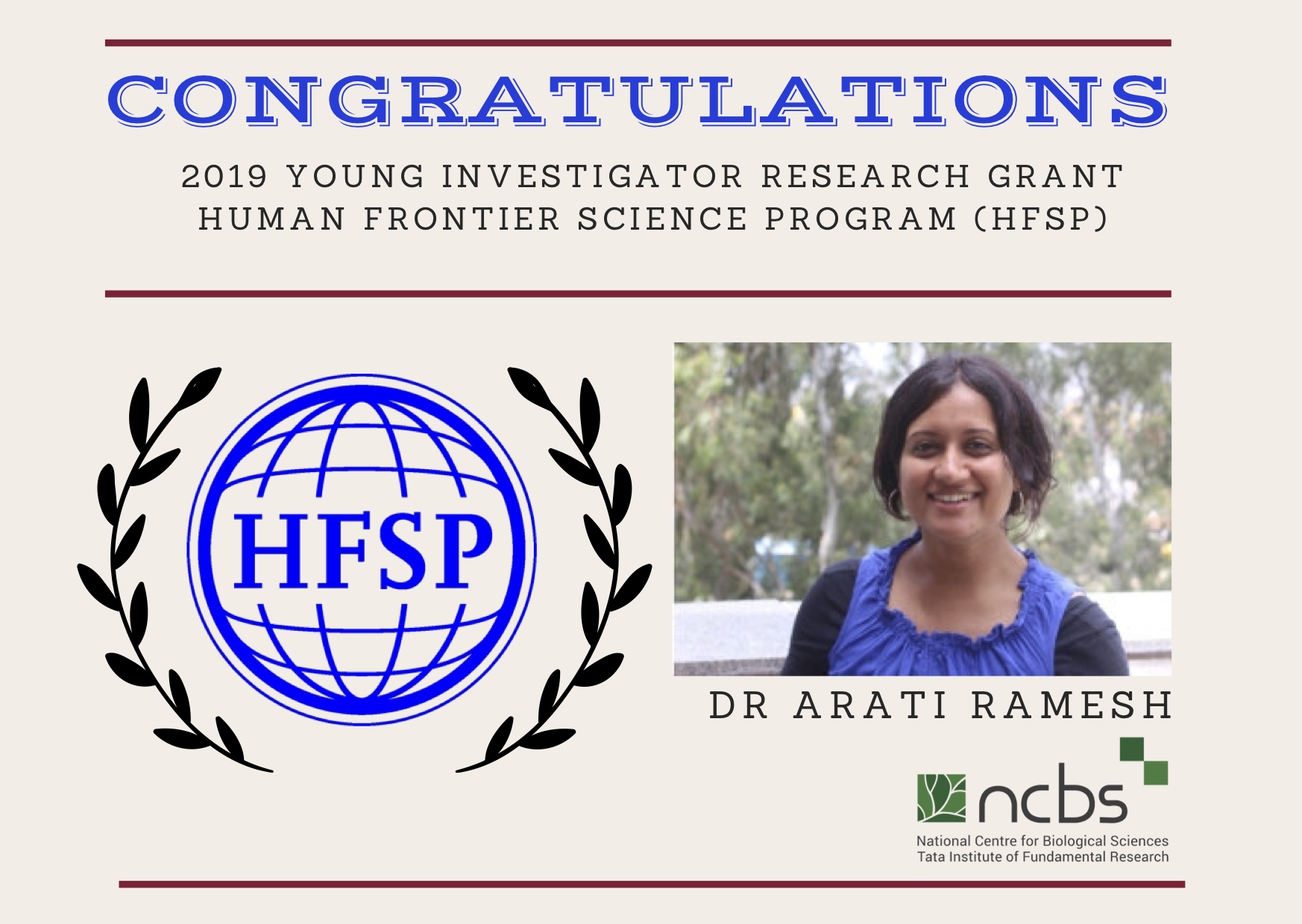
It’s all very confusing with Susmit, here is what he previously wrote to someone else over Facebook:
“Dr. Ramesh has a practice to force students, who are doing experiments to perform experiments in such a way that the result will match with the prediction by Dr Ramesh’s pet bioinformatician. She is also one of the authors of the retracted paper. There is a high possibility that the paper and the poor grad student is facing the consequences of this madness by Dr. Ramesh.
Point 2: It is a a tiny lab because none of the students (interns, grad students or postdocs) can stick to Dr. Ramesh’s lunatic mentality for longer period of time. There ware many complaints to the admin of ncbs by the departed students for the mental torture did by Dr. Ramesh on them. But most of the time Dr. Ramesh got rid from the situation presumably by playing her gender based tramp card.
Point 3: Dr. Ramesh is giving a WRONG information to the people that the victim, the poor grad student left lab ABRUPTLY.This is utterly ridiculous. The grad student left NCBS with the proper/signed (NOT PHOTOSHOPED) no objection certificate from NCBS by the director. So claiming that the student left ncbs with the data is bullshit. Dr. Ramesh is lying.
Point 4: it is evident from published materials (news papers, testimonials) that she claimed entire the credits of this ground breaking (lol) discovery by herself. Now she (and her institution as well) is pointing finger to the poor student. The manuscript was reviewed by many scientist (list was on the acknowledgement section of the retracted paper). Was everyone on weed? “
Susmit confirmed to me that he indeed wrote this message. Now he turned from denouncing his ex-boss Arati Ramesh to blaming Siladitya alone, since the latter blew the whistle, including on Susmit himself. But then again, Susmit must be the real victim here, he explains to have been constantly framed and falsely accused by various former NCBS colleagues. Here a screenshot on my Facebook Messenger discussion with him, my comment in blue, Susmit Chaudhury’s in grey.
[…]

So much to investigate at NCBS. Maybe the investigators will also find time to look into the papers of the NCBS director, Satyajit Mayor.
Mugdha Sathe , Gayatri Muthukrishnan , James Rae , Andrea Disanza , Mukund Thattai , Giorgio Scita , Robert G. Parton , Satyajit Mayor Small GTPases and BAR domain proteins regulate branched actin polymerisation for clathrin and dynamin-independent endocytosis Nature Communications (2018) doi: 10.1038/s41467-018-03955-w


The Italian collaborator Giorgio Scita assured me about these figures: “The data were indeed performed in Jitu’s lab.“
Update 16.09.2021
A press release was just issued, announcing the results of the misconduct investigations. Ramesh is saved, because she and her right hand Dolly Mehta “were unaware of this malpractice, and did not encourage it in any way.” Both are innocent of research misconduct, Ramesh is guilty merely of “scientific carelessness and lack of diligence“, despite her “authoritarian conduct“, it’s stated that Ramesh “would never have supported any unethical practice.” She is sanctioned with some lab management training and supervision. Mehta is even to receive a certificate of utmost honesty. Siladitya Bandyopadhyay and Susmitnarayan Chaudhury are both charged with research misconduct.
Regarding recent allegations of academic malpractices at NCBS-TIFR
“The TIFR Academic Ethics Committee (TAEC), at the behest of the TIFR Director, carried out a thorough investigation into the allegations of data manipulation in connection with two papers published from a laboratory of NCBS-TIFR. The committee also examined allegations of malpractice and harassment in the laboratory. After studying all the aspects, interviewing concerned individuals (giving them a chance to explain their point of view), and making careful deliberations, the TAEC submitted its report to the Director, TIFR; its conclusions are summarized below.
- Two papers were under consideration.
a) The first paper that appeared in the journal Nature Chemical Biology (NCB) has been retracted by the journal. There is unambiguous evidence that several of the images, on which the conclusions of the paper were based, had been deliberately manipulated, amounting to serious scientific malpractice. There are also strong indications that samples used in some of the experiments in the paper had been manipulated.
b) The second paper, which appeared in the Journal of Molecular Biology (JMB) [Mehta et al 2020, -LS], contains an error traceable to inadvertent mislabelling of two samples. Once this mistake is corrected, the findings reported are genuine. The journal has accepted the explanation of the authors, and will publish a suitable corrigendum. No malpractice of data or image manipulation was found in this paper. However, this mistake could have been avoided had a careful scrutiny of the manuscript been carried out before its submission to the journal. - There is compelling evidence which indicate that the image manipulation and result falsification in the NCB paper (now retracted) were carried out entirely by the first two authors. The first author has admitted to his role in the offense. The third co-author, as well as the fourth and corresponding author (Principal Investigator, PI), were unaware of this malpractice, and did not encourage it in any way.
- The corresponding author and PI of the laboratory must bear the overall responsibility for not subjecting these ‘results’ to proper scientific scrutiny before the paper was communicated for publication. In the opinion of the committee, the PI’s scientific carelessness and lack of diligence while communicating the paper contributed substantially to this untoward incident.
- The committee found substance in some allegations of authoritarian conduct by the PI in her laboratory environment. However, the laboratory members were unanimous in declaring that she would never have supported any unethical practice. The committee is of the view that no lapses in the behaviour o dishonest practices by any of her lab members.
- Subsequent to the revelation of data and image manipulation, the paper was retracted following a proper procedure. The process was initiated in a timely manner, and the fact that the retraction took several months was due to investigations carried out by the journal as well as the normal retraction formalities. No blame attaches to any party for the time lag between the initial exposure of irregularities and the final retraction.
- The committee felt that while the PI and the NCBS-TIFR management did handle the scientific retraction professionally, they were not wholly correct in the public statements after the malpractices were discovered. The PI had shared the “raw data” to the Pubpeer site in haste and without verification. The statement in the press release of NCBS-TIFR that the malpractice was carried out by only one individual, and the statement made by the PI on her website implying that one author had left her lab abruptly were both
incorrect.
In view of these findings, the TAEC has recommended the following action. - For the junior co-authors: While the actions of the first author of the NCB paper cannot be justified, the entire blame seems to have been unfairly apportioned to him and this impression should be corrected. For the other author involved in the manipulations, his current institution should be informed of the compelling evidence of his involvement in this particular incident of scientific malpractice. The third co-author should be issued a
formal letter by TIFR, declaring that she was not involved in any malpractice related to these publications. - For the lab PI: She should be immediately counselled to be more professional in her scientific practices and her conduct in the laboratory; this should be monitored by the Centre. There should be an active Supervisory Committee with a clearly defined mandate, to oversee, for a specified period, the lab activities, including the lab environment, lab practices, and publication practices.
- For NCBS-TIFR: The Centre should preserve the samples and laboratory records relevant to this case in safe custody, in case they are needed for future investigation. NCBS-TIFR should also put in place a more efficient mechanism to monitor the workplace environment for its students and staff members.
- For the TIFR system as a whole: TIFR may create a pan-TIFR Student Support Cell across all its campuses, where students at all levels can raise any issues, academic or non-academic. Orientation programmes should be organized for the academic community to increase awareness about academic ethics and the implementation of best academic practices.
The TIFR Management accepts the findings of the TAEC, and will be considering its recommendations with utmost seriousness. TIFR as an institution remains committed to maintaining the highest standards in matters of ethics, scientific output and an amicable work atmosphere. The Management will take all efforts to see that systems are put in place to ensure that incidents like the current one cannot be repeated in the future.“
Make a one-time donation
Make a monthly donation
Choose an amount
Or enter a custom amount
Your contribution is appreciated.
Your contribution is appreciated.
DonateDonate monthly




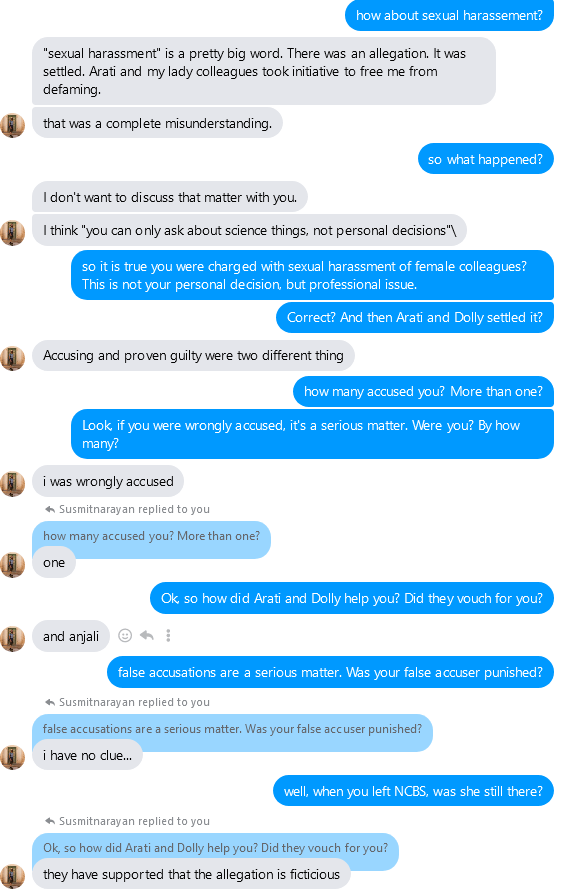

Pingback: Faking Raw Data with an Iron Fist – For Better Science
Pingback: Student, Meet Bus – For Better Science
There is another brewing scandal, about the papers of InStem Director Apurva Sarin, who also happens to be board of trustees member at HFSP (which gave Arati Ramesh the grant), and Sarin is also the boss of Ramesh’s husband Sunil Laxman.
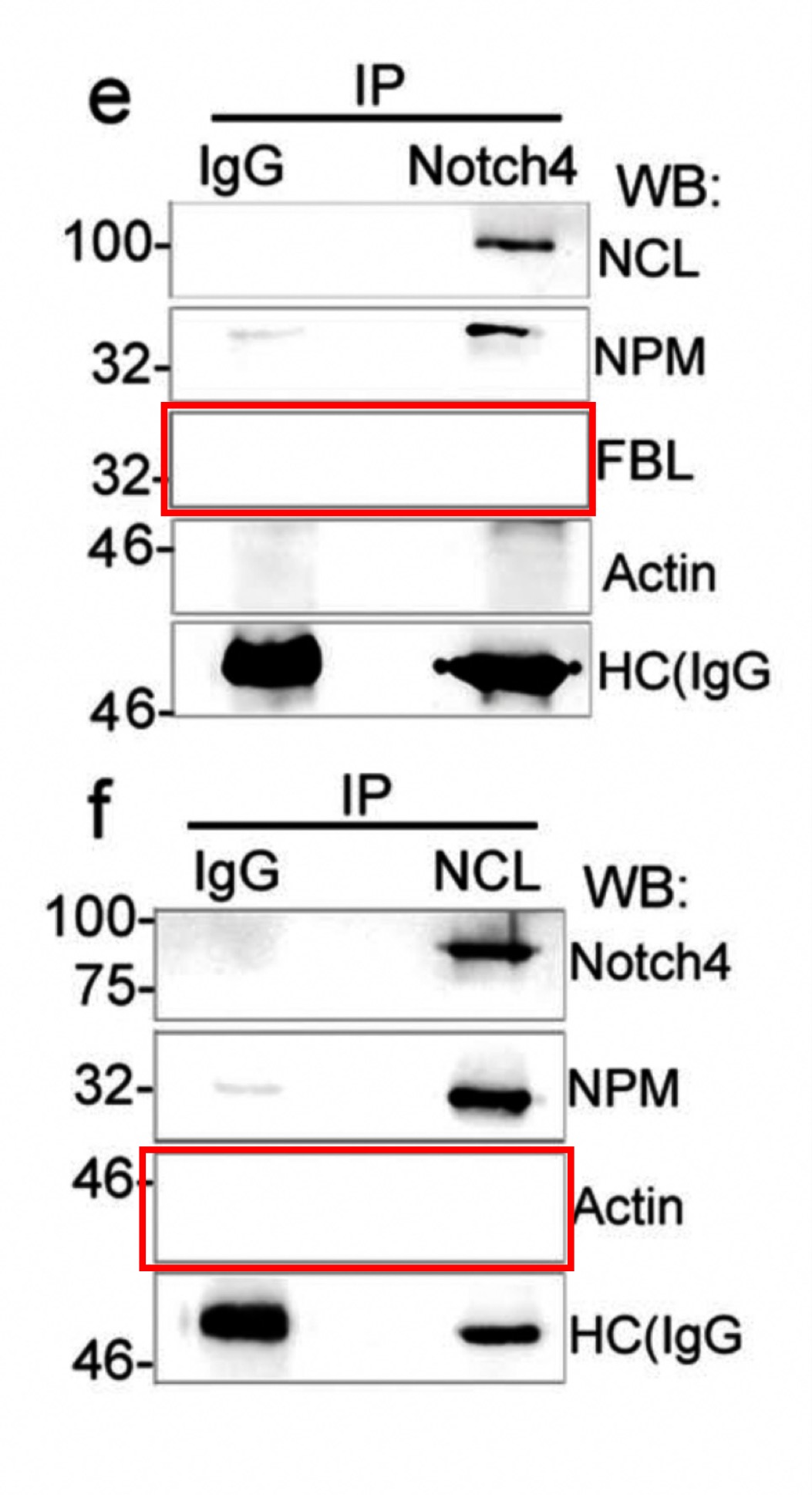

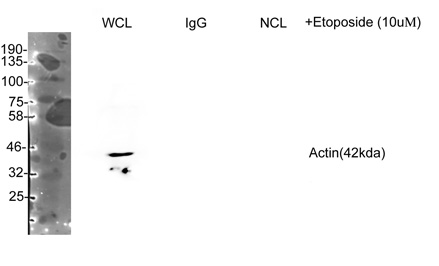

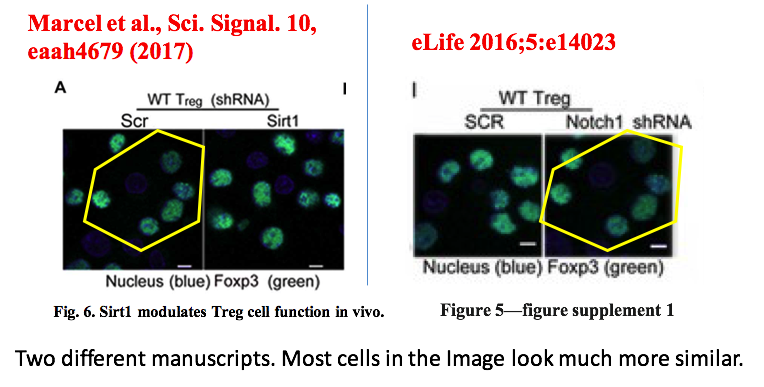
The issues in Sarin’s papers appeared initially minor, but her strange replies made things much worse, so they attracted more sleuth attention.
Examples:
Neetu Saini, Apurva Sarin Nucleolar localization of the Notch4 intracellular domain underpins its regulation of the cellular response to genotoxic stressors Cell Death Discovery (2020) doi: 10.1038/s41420-020-0242-y
Cheshire found this: “Figure 3e and 3f have no background in a couple of bands.”
Sarin replied: “The membranes probed for the proteins shown up including the lane with a whole cell lysate (WCL)”
and shared something purporting to be raw data but which looks like a collage of gel picture cut-outs on a white sheet of paper.
Sarin was told this is not raw data. What she shared afterwards wasn’t convincing either.
Or this:
Nimi Marcel, Apurva Sarin Notch1 regulated autophagy controls survival and suppressor activity of activated murine T-regulatory cells eLife (2016) doi: 10.7554/elife.14023
This is clearly same cell re-used in a different context, which happens several times in that paper.
Nimi Marcel replies: “The cells shown in the main figure are representations of multiple cells in the pool shown in the supplemental figure.”
What is that ever supposed to mean? It gets worse:
This is not just a cell image reused across two papers in different context, the image was also Photoshopped in the process. The other paper is
Nimi Marcel , Lakshmi R. Perumalsamy , Sanjay K. Shukla , Apurva Sarin The lysine deacetylase Sirtuin 1 modulates the localization and function of the Notch1 receptor in regulatory T cells
Science Signaling (2017) doi: 10.1126/scisignal.aah4679
Here a find by Elisabeth Bik:
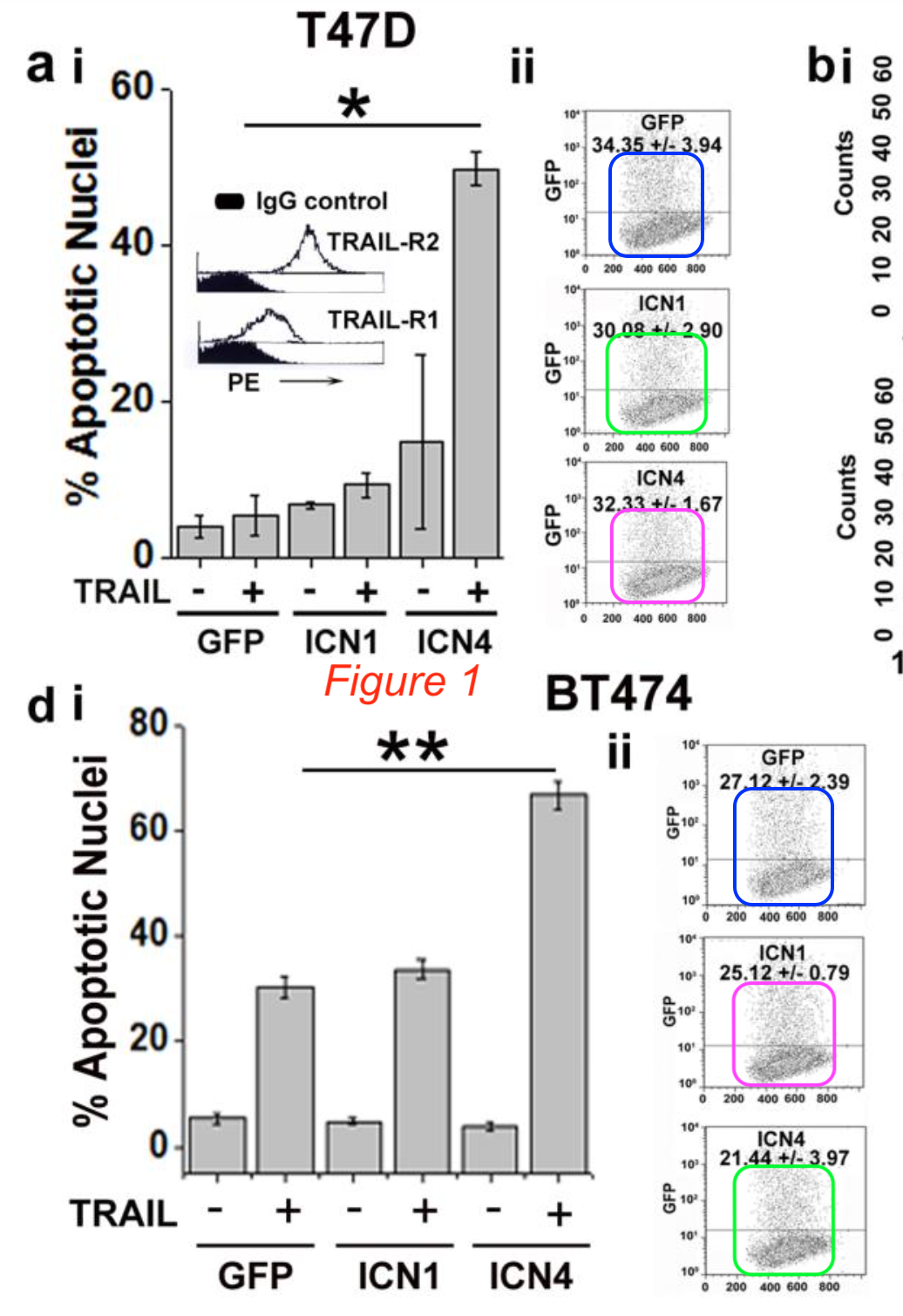
Shambhavi Naik , Marion MacFarlane author has email , Apurva Sarin Notch4 Signaling Confers Susceptibility to TRAIL-Induced Apoptosis in Breast Cancer Cells Journal of Cellular Biochemistry (2015) doi: 10.1002/jcb.25094
Bik: “The three flow cytometry panels representing T47D cells look similar to the three panels representing BT474 cells, albeit in a different order, with different gated percentages, and slight changes in the dots. Shown with boxes of the same color.”
There is more on PubPeer.
LikeLike
And even then, there will always be well-wishers claiming that you dragged everyone into the mud!
LikeLike
I contacted HFSP about the Arati Ramesh affair and also the situation about their trustee’s Apurva Sarin’s PubPeer record (in this regard, I asked if she recused herself from handling the Ramesh case).
Having exchanged several emails, I received this statement from the HFSP Communications Director, Guntram Bauer:
“As per our previous exchanges, let me reassure you once again that HFSPO has very high standards via its policies and procedures to prevent and mitigate any form of science misconduct, and that we will adhere to these in all cases, including these currently at hand in India. HFSPO acts independently, transparently and above all based on facts, and without being presumptuous.
In case of the alleged misconduct by Dr Ramesh, we were timely notified by the leadership of Dr Ramesh’s Institute (NCBS) about the misconduct and about their investigation. The final results of an investigation by higher level governance of NCBS, of which Dr. Sarin is not a member, is underway and we are awaiting this outcome before we take our own actions.
We are aware from PubPeer of the ongoing discussion between Dr Sarin and some of her papers critics, but no other formal complaints or investigations against Dr. Sarin were brought to our attention so far. We believe that this scientific peer to peer discussion taking place through PubPeer should now be given the room to evolve before arriving at conclusions.”
LikeLike
I wonder how Prof Sarin will explain this.
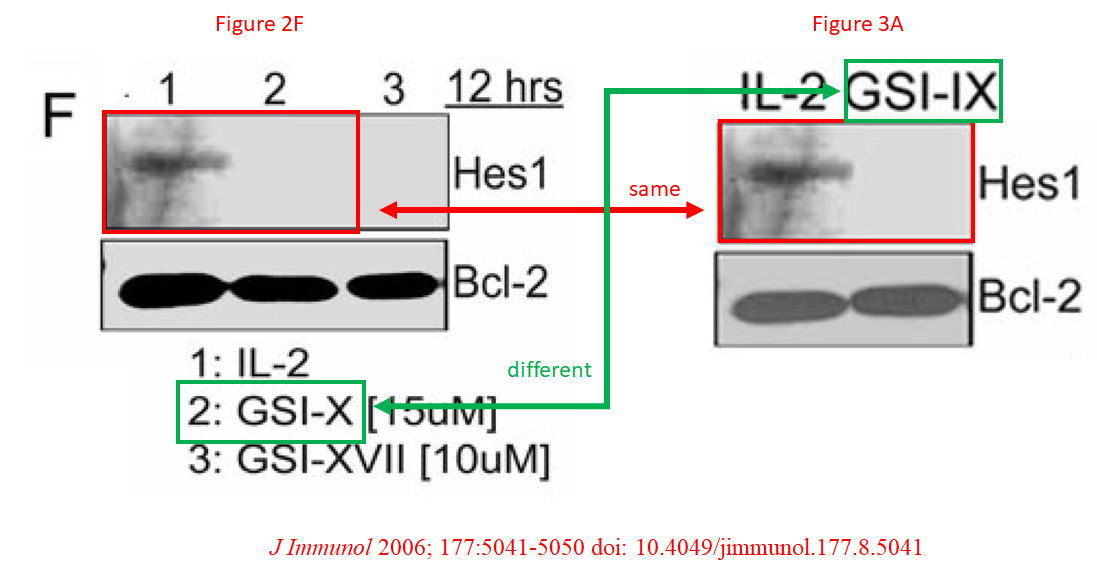
In fact, she doesn’t have to. Journal of Immunology is a fraud factory, operated by the US learned society AAI who have exactly zero shame for what they publish. This is how low J Immunology and AAI are able to sink:
https://forbetterscience.com/2019/04/09/how-andrea-cerutti-molested-and-defiled-journal-of-immunology/
LikeLike
Leonid, Arati Ramesh has officially been denied tenure at TIFR. She will fight it tooth and nail though. A long procedural and legal battle seems to be ahead. Get your antennae up again friend.
LikeLike
What kind of language is this “the one fingered by NCBS and the principal investigator”. ?
LikeLike
English language?
LikeLiked by 1 person
NCBS and the principal investigator metaphorically pointed an accusatory finger at someone.
LikeLike
Ah, Bhadralok Bengalis! Always focusing on “civil language” to invisibilize bigotry and research fraud.
LikeLike
Why bother about the language? Look at the bigger problem in this case.
LikeLike
SB talks about one person named Deepa in the interview. Any info on her full name? Is it the one defending the PI here?:
LikeLike
Dr Deepa Agashe. Yes, she is the one defending the PI here.
LikeLike
inStem has strong Cambridge connection…the plot is getting thicker now..
LikeLike
Here a thought: if Siladitya’s allegations that Susmit was falsifying data by skillfully adjusting buffers and other experimental parameters are true, and if Nature Chem Biol reviewers accepted the original manuscript, which consisted mostly of Susmit’s data: nobody would have ever found that this study was utterly fake.
The paper would have become a celebrated scientific breakthrough, and draw lots of funding, awards and promotions.
How many papers like this one are out there?
LikeLiked by 1 person
Dr Susmitnarayan is a master manipulator. Period!
His ninja level of fabrication of an instrument is nobel prize worthy. Sadly, he missed the award due to 98% of his data being slyly replaced by Siladitya. Real web series here!
LikeLike
absolutely! there may be many cases like this where you will never find out! You cannot even investigate…
LikeLike
Unfortunately, I believe so much science misconduct is of this very type. A scientist willfully changes the experimental conditions to produce the desired results. There is no way to catch it unless journals started requiring some results to be reproduced by an independent group before publication.
LikeLike
Let’s not forget Sunil Laxman, Arati Ramesh husband, awarded with an EMBO Global Investigator grant, group leader at inStem, who defended his wife saying the Nat Chem Biol paper was “mostly correct” and she (his wife) was “incredibly brave”.
The remarkable Sunil has 6 papers flagged in PubPeer, please have a look here:
https://pubpeer.com/publications/A933B5323155E987096C3A92AD9FC9
https://pubpeer.com/publications/DD67933376FE7635CD44A03F3F670E
https://pubpeer.com/publications/54AB253C211CF1D6FD61CC5AC3FC07
https://pubpeer.com/publications/8A054F8513928C0BA96A2401DBA364
https://pubpeer.com/publications/AC07256B8265C88A545F7DE74CE7E6
https://pubpeer.com/publications/1A50F332E53A22EF11C50A0E310756
Sunil and Arati, husband and wife. It’s really true that “Birds of one feather flock together”.
LikeLike
BliSc campus is not only home to cases of sexual harassment, but also to a lot of cases of sexual harassment being taken lightly.
A number of sources from the campus have confirmed that another student on the campus, has a similar creepy looking problem too. When the PI was told repeatedly about the problem, he always responded that it might be due to a mental disorder.
So, what I conclude from the whole institute’s policy is: Sexual harassment is fine, you just have to be mentally retarded!
LikeLike
If you really think that is the case, call out Uma Ramakrishnan, the chair of the Internal Complaints Committee.
LikeLike
What I think is interesting is how so many people greatly benefited from the fraud. In particular, the first authors, one who got a job in a biotech company and one who escaped to the US, and probably hopes to stay there. Fraud pays handsomely.
LikeLike
I think this interview should put to rest the spurious discourse about consent of the student that establishment journalists in India were putting out. Did they ever reach out to the student? Were they deliberately censoring the student’s side of the story? These journalists, especially those who have been posting here in droves raising all kinds of questions, have a lot to answer for as do those (see above) whose response does not go beyond pointing out unconventional English usage (or even incorrect or erroneous usage if you like) in a sentence in this article!
LikeLiked by 1 person
We all are butthurt little creeps here.
LikeLike
Some one should check which journalism school they graduated from. That may explain the “ethical” nature they have. Please..
LikeLike
One of the above is now being drawn into court by the vaccine maker for wire reporting – who appears to be a public health expert.https://www.thehindu.com/news/national/telangana/take-down-stories-on-bharat-biotech-court-tells-the-wire/article65078517.ece
LikeLike
Great work, Leonid! Any response from the Wellcome Trust about funding fraudulent research in India?
LikeLiked by 1 person
You mean HFSP and EMBO who fund Arati and Sunil? Former stopped talking to me, later never replied in the first place.
LikeLike
I meant the Wellcome DBT India Alliance fellowship program:
https://www.indiaalliance.org/fellow/arati-ramesh
LikeLike
Pingback: How badly do you need that letter of recommendation?